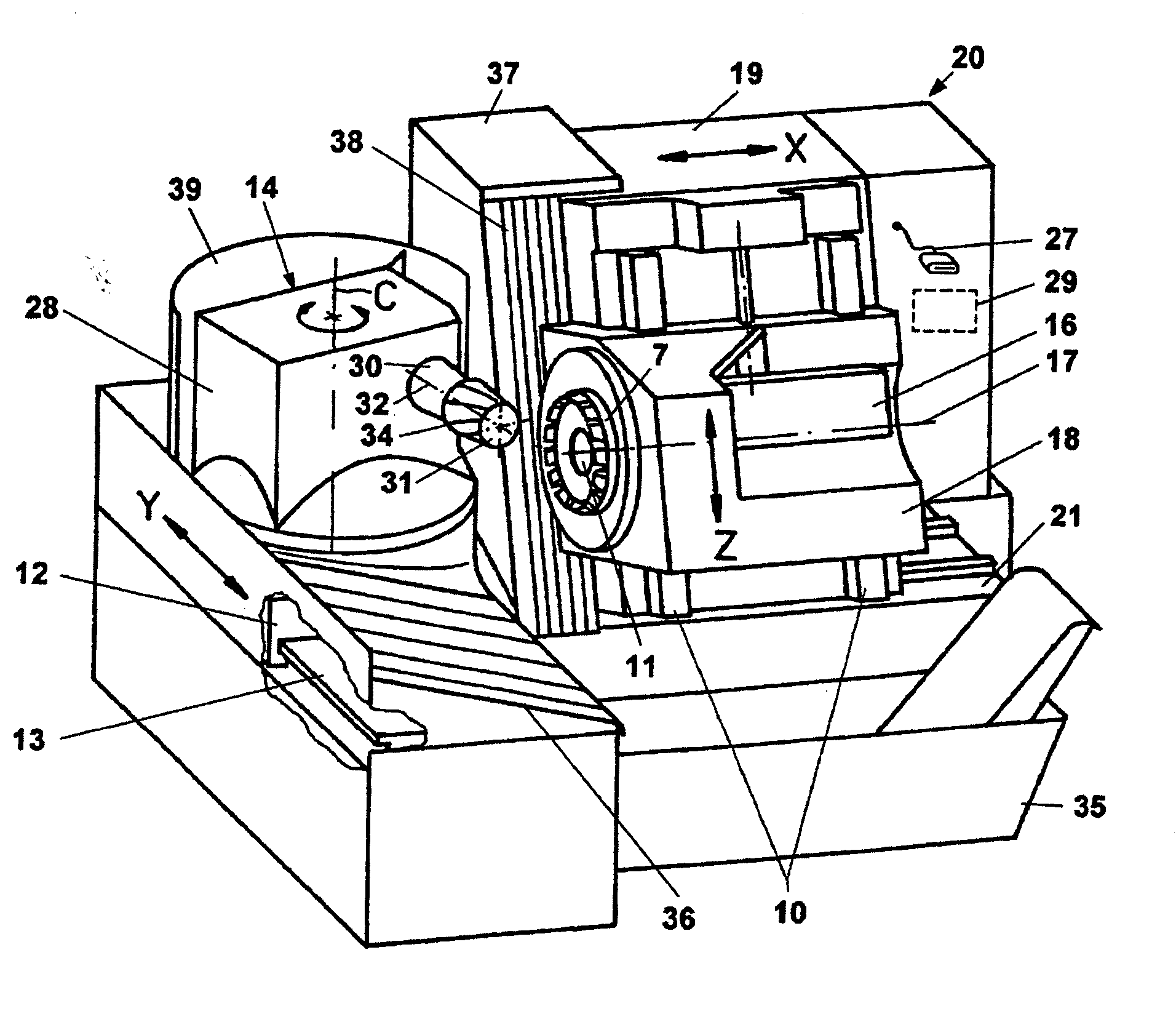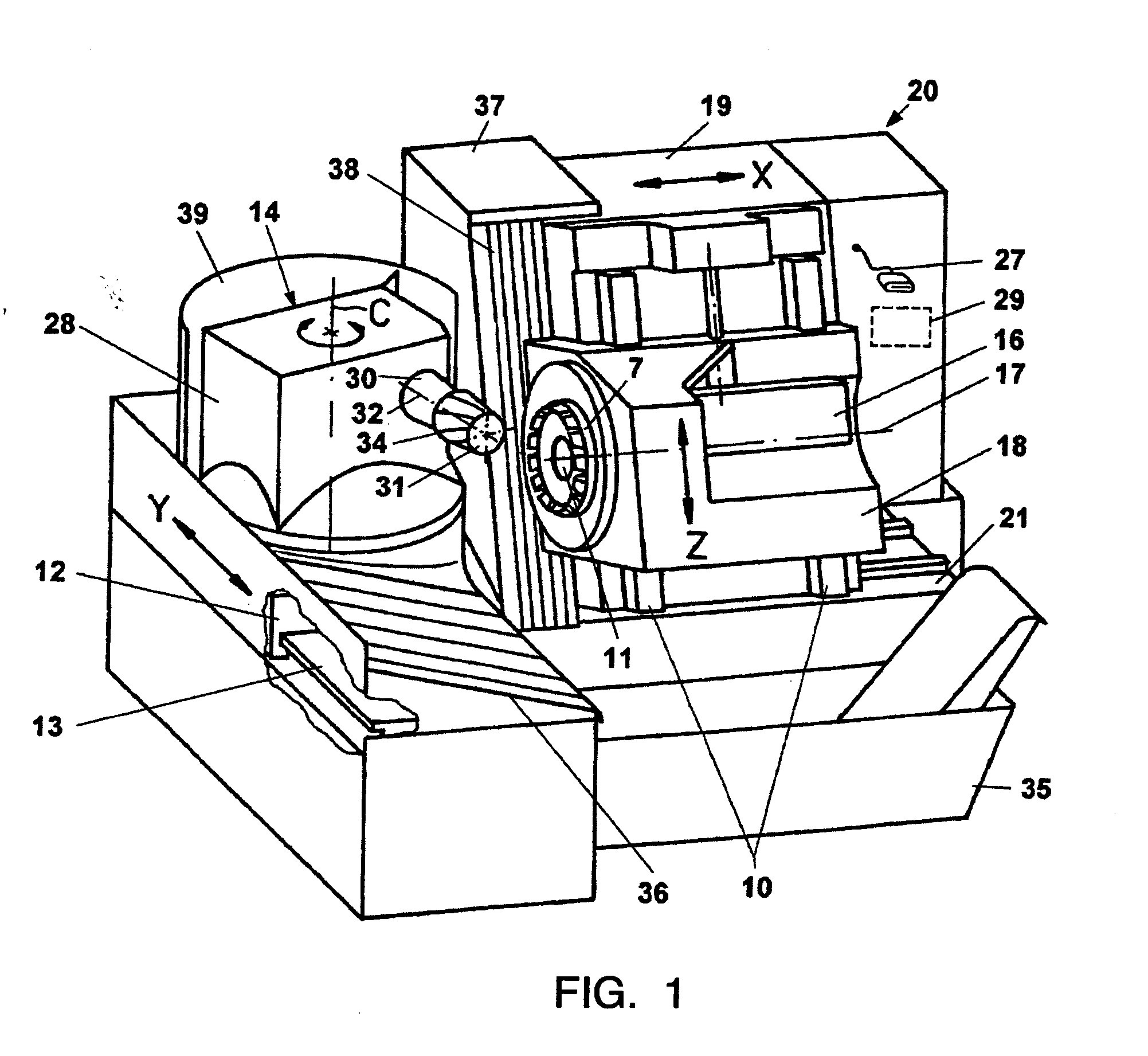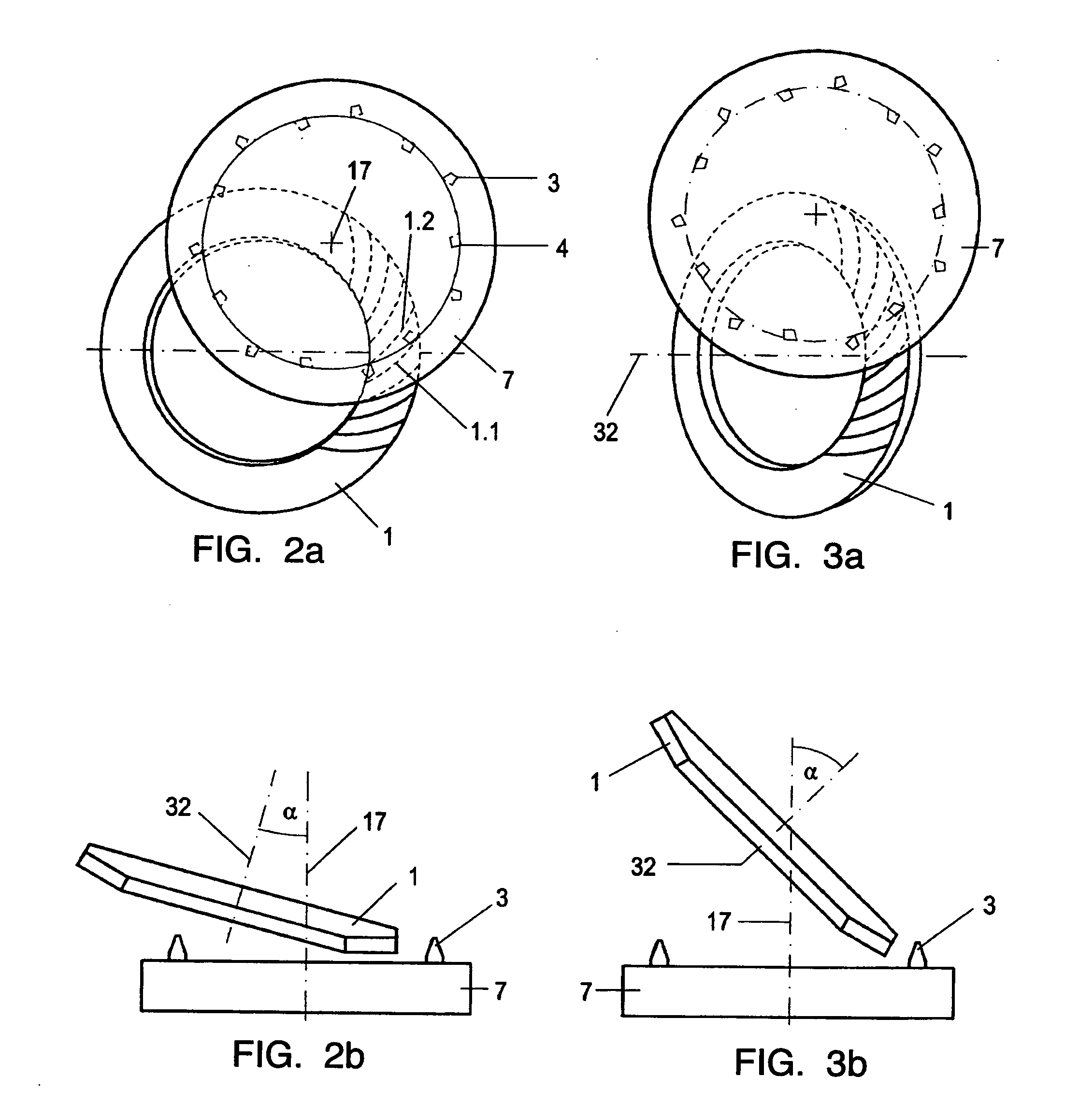Bevel gear cutting machine for chamfering and/or deburring edges on the teeth of a bevel gear
a technology of bevel gear and cutting machine, which is applied in the direction of gear teeth, belt/chain/gearing, gear elements, etc., can solve the problems of inability to chamfer the outer tooth ends of slender shaft pinions, frequent broken edges, and inability to accept additional workpiece clamping
- Summary
- Abstract
- Description
- Claims
- Application Information
AI Technical Summary
Benefits of technology
Problems solved by technology
Method used
Image
Examples
Embodiment Construction
[0022] A possible embodiment of the present invention will be described in connection with FIGS. 1, 2, and 3. A bevel gear pinion is machined in FIG. 1, while in contrast a ring gear is machined in FIGS. 2 and 3.
[0023]FIG. 1 shows a perspective illustration of the basic construction of a CNC machine 20 for manufacturing spiral-toothed bevel gears 31. Such a machine 20 may be designed or retooled according to the present invention in order to allow deburring or chamfering of the bevel gear 31 using the same bar blades which are also used when manufacturing the teeth of the bevel gear 31.
[0024] The CNC machine 20 may be constructed as follows. A machine housing 19 is guided horizontally and linearly along a linear coordinate axis X (first axis) on a machine bed 21. A first carriage 18 may travel in height on a guide 10, which is attached to a side face of the machine housing 19, along a linear coordinate axis Z (second axis) using a spindle drive 16. A workpiece spindle support 14 h...
PUM
| Property | Measurement | Unit |
|---|---|---|
| Angle | aaaaa | aaaaa |
| Shape | aaaaa | aaaaa |
Abstract
Description
Claims
Application Information
 Login to View More
Login to View More - R&D
- Intellectual Property
- Life Sciences
- Materials
- Tech Scout
- Unparalleled Data Quality
- Higher Quality Content
- 60% Fewer Hallucinations
Browse by: Latest US Patents, China's latest patents, Technical Efficacy Thesaurus, Application Domain, Technology Topic, Popular Technical Reports.
© 2025 PatSnap. All rights reserved.Legal|Privacy policy|Modern Slavery Act Transparency Statement|Sitemap|About US| Contact US: help@patsnap.com



